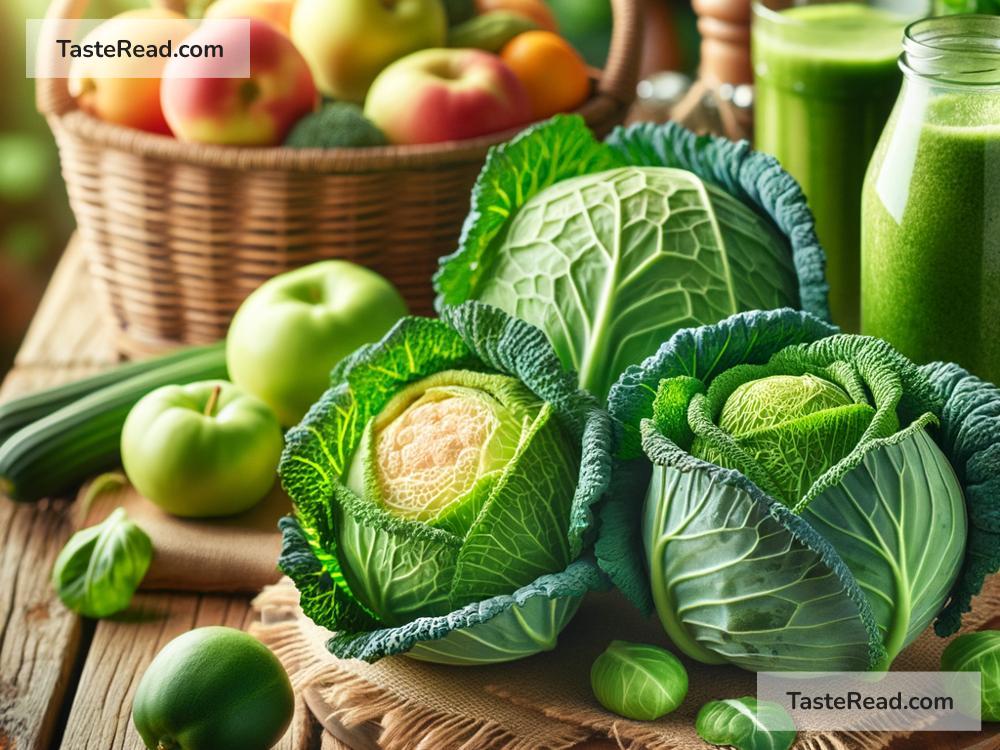How Cabbage Became a Symbol of Healthy Eating
Today, cabbage is celebrated around the world as a symbol of healthy eating. From soups and salads to stir-fries and fermented dishes like sauerkraut and kimchi, cabbage can be found in various cuisines. But how did this humble vegetable rise to fame and become a staple in the diets of health-conscious people? Let’s dive into its fascinating history and nutritional benefits to understand why cabbage earned its spot as an icon of wellness.
A Brief History of Cabbage
Cabbage has been grown and eaten for thousands of years, making it one of the oldest vegetables in history. Its origins trace back to Europe roughly 2,000 years ago, and it is believed to be native to the Mediterranean region. Early civilizations valued cabbage for its resilience—it could thrive in poor soil conditions and cooler climates, making it a reliable crop when other plants couldn’t grow.
Romans and Greeks considered cabbage not only a food source but also a medicinal plant. Ancient Roman philosopher Pliny the Elder spoke of cabbage as a cure for several health problems, while Greek doctors used it to treat wounds and inflammation. By the Middle Ages, cabbage was widely grown across Europe and became a diet staple for farmers and common folks.
Cabbage later spread to Asia, where it became an important part of Chinese and Korean cuisines. Over time, as trade routes expanded and people migrated, cabbage became an essential ingredient in diets all over the globe.
Why Is Cabbage Considered So Healthy?
Cabbage’s rise as a symbol of healthy eating is largely due to its incredible nutritional profile. While it may look simple and unassuming, cabbage is a powerhouse vegetable packed with vitamins, minerals, and antioxidants. Here’s a closer look at what makes cabbage so good for you:
-
Low in Calories, High in Nutrients
Cabbage is extremely low in calories, with about 25 calories per cup of chopped cabbage. At the same time, it provides a wealth of nutrients, including vitamin C, vitamin K, and fiber. This makes cabbage an excellent option for people trying to lose weight or maintain a balanced diet. -
Rich in Antioxidants
Cabbage contains compounds like polyphenols and sulfur-rich nutrients that act as antioxidants. Antioxidants help fight free radicals in the body, which can damage cells and lead to illnesses like cancer. Red cabbage is especially rich in anthocyanins, an antioxidant that gives it its vibrant purple color. -
Supports Digestive Health
Cabbage is high in fiber, which is essential for a healthy digestive system. Fiber helps to prevent constipation, regulate bowel movements, and promote the growth of beneficial gut bacteria. Fermented cabbage products like sauerkraut and kimchi further enhance gut health by introducing probiotics (healthy bacteria) into the digestive system. -
Helps Reduce Inflammation
Certain compounds in cabbage, such as glucosinolates and flavonoids, have anti-inflammatory properties. Chronic inflammation has been linked to diseases such as arthritis, heart disease, and diabetes, so eating cabbage may help lower these risks. -
Affordable and Accessible
Another reason cabbage is seen as a symbol of healthy eating is its accessibility. Unlike some trendy superfoods that can strain your wallet, cabbage is affordable and widely available. Its long shelf life also makes it convenient for households looking to reduce food waste.
Cultural Influence on Healthy Eating
Cabbage’s reputation for health benefits was further solidified by its role in traditional cuisines, especially fermented dishes like sauerkraut from Europe and kimchi from Korea. These fermented foods are now praised by nutritionists for their ability to improve gut health and boost the immune system. The global popularity of these dishes helped cabbage gain attention as an ingredient that delivers both flavor and health.
Many cultures also associate cabbage with comfort food, making it a healthy option that feels nourishing. For example, cabbage soup is a staple in cold regions where warm, hearty meals are essential during winter months. Over time, cabbage became a symbol of wholesome eating and a well-balanced lifestyle.
Cabbage in Modern Diets
In the age of social media and wellness trends, cabbage has experienced a resurgence. Food bloggers, chefs, and nutritionists are constantly finding new ways to showcase cabbage recipes, from roasted cabbage steaks to creative slaws. Many people also turn to cabbage for detox purposes, with diets like the “cabbage soup diet” gaining popularity for quick weight loss.
Today, cabbage is more than just a vegetable—it represents simplicity, practicality, and health. Its affordability and versatility make it accessible to people from all walks of life, while its nutritional benefits cater to those seeking a healthier lifestyle.
Conclusion
Cabbage’s journey from a simple crop to a global symbol of healthy eating is a testament to its versatility, resilience, and undeniable health benefits. Whether you enjoy it raw, cooked, or fermented, cabbage is a nutrient-packed vegetable that can easily fit into a wide range of recipes and diets. It reminds us that true “superfoods” don’t always have to be exotic or expensive—they can be humble, affordable, and grown in our backyard.
So next time you add cabbage to your plate, remember how this ancient vegetable has stood the test of time and continues to inspire healthy eating habits everywhere!


